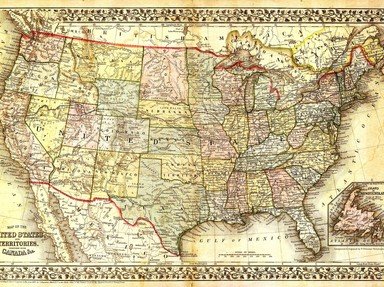Quiz Answer Key and Fun Facts
1. Who were the earliest Europeans to explore the area that is now Chicago?
2. Who is usually given credit for being Chicago's first permanent settler?
3. The United States acquired the territory that includes Chicago following the Revolutionary War. A settlement began to grow up around Fort Dearborn, a post named after Henry Dearborn, the Secretary of War. It was built in 1803, and stood at what is now the intersection of Wacker Drive and Michigan Avenue. Then, in 1812, a disaster occured that nearly spelled the end of Chicago. What was it?
4. When Illinois became a state in 1818, most of the population lived in the extreme southern part of the state; Chicago was still a small settlement of perhaps one hundred people. The state's largest bank was in Shawneetown, near the confluence of the Wabash and Ohio Rivers. In 1830, the citizens of Chicago applied for a loan from the Bank of Shawneetown to finance civic improvements. Was the loan approved?
5. The city of Chicago was incorporated in 1833, when it had a population of 350. Four years later, in 1837, it was granted a charter by the State of Illinois, and its population began to grow rapidly. What was NOT one of the things that contributed to Chicago's rapid growth?
6. In 1871, another disaster struck Chicago, one which killed 300 people and virtually wiped out the downtown business district. What was it?
7. By 1890, Chicago's population had passed the one million mark, and it was the second largest city in the country. Chicago beat out New York City for the honor of hosting a World's Fair to commemorate the 400th anniversary of Columbus' discovery of America. Popularly called the Columbian Exposition, the fair opened to the public on May 1, 1893 and ran until October 30, 1893. During the six months it was open, how many visitors did the fair attract?
8. On July 24, 1915 Chicago experienced one of its worst disasters when a cruise ship capsized at the dock, killing 848 people. What was the name of the ill-fated ship?
9. During the Prohibition Era, Chicago was the scene of some of the worst gang violence in the country. On February 14, 1929 seven members of Bugs Moran's North Side Gang were murdered in a garage on North Clark Street by gunmen believed to be working for Moran's rival, Al Capone. What has this incident come to be called?
10. Chicago is still popularly known as "the Second City," but it is no longer the second largest city in the United States. In what year did Chicago fall to third place in the population rankings?
Source: Author
daver852
This quiz was reviewed by FunTrivia editor
bloomsby before going online.
Any errors found in FunTrivia content are routinely corrected through our feedback system.

